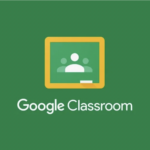I have been looking forward to this lecture all semester. I love learning about inclusion and accessibility in the classroom and how I can make my classroom environment the most diverse and supportive that I possibly can. Our guest speaker, Chantelle Morvay-Adam, was incredible at explaining the importance and necessity for our classrooms and lessons and pedagogies to be inclusive to each and every single type of learner. Tech works as yet another tool for us to use to make our classrooms even more inclusive, and to make our lessons even more accessible to neurodiverse students.
Similar to my post last week, we have to ask ourselves: What is this technology actually accomplishing to make this lesson even more accessible for the particular student, and can guarantee their success in attaining your desired learning outcomes? Many students with neurodiversities or disabilities are given an iPad or chromebook to use in class, but what are they using it for? Are they given it just because they have an IEP and play farmville all day? Or are they using it to scan text and have it read back to them because they have dyslexia? Are they using it to doodle aimlessly throughout class? or are they using it to type their texts because of motor skill disabilities and can’t handwrite? Just like every other tool in the classroom, technology also has a purpose and its massively important that if we are given these tools to use with students who need them, we tailor our lessons to include an effective use of this tool for that student, to ensure they can complete the assignment to the quality expected of them.
Here is a video of the incredible Shelley Moore, talking about inclusion in Canadian classrooms and evolution through time.


